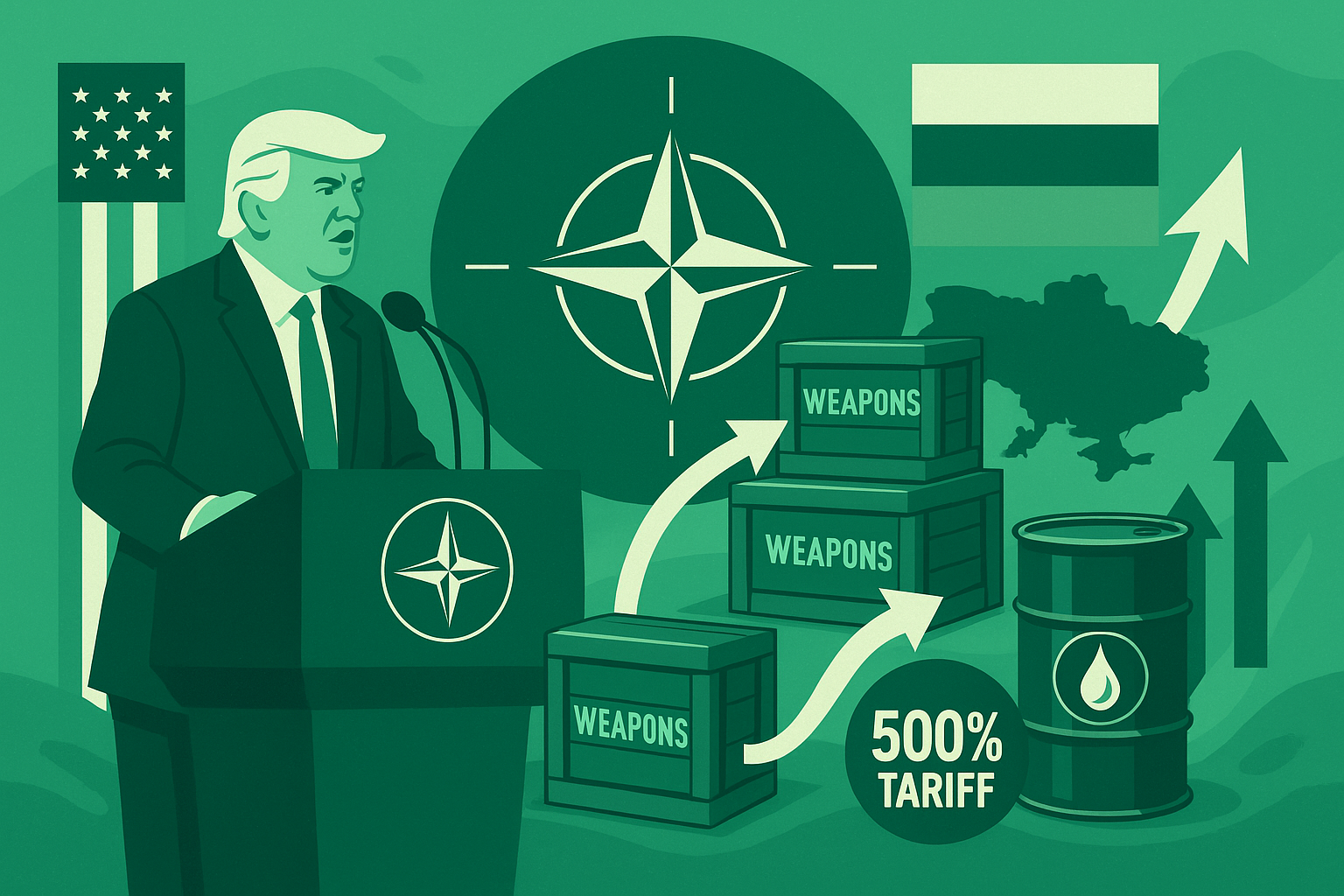A New Phase in the Russia–Ukraine War Set to Be Unveiled on July 14
On July 10, 2025, U.S. President Donald Trump declared in an interview with NBC that he would deliver a “major announcement” regarding Russia on the 14th. At the same time, he revealed a new framework for supplying weapons to Ukraine via NATO and voiced support for a dramatic new sanctions bill imposing up to 500% tariffs on Russian oil and gas imports by third countries.
This report breaks down the key points, strategic background, and global implications of Trump’s remarks—covering international politics, energy markets, and security alignment.
1. Key Points from Trump’s Announcement
● Major Statement Coming July 14
Trump stated, “I’m disappointed in Russia,” without revealing details but hinted at significant developments: “We’ll see what happens over the next few weeks.” This signals a strategic escalation or diplomatic shift.
● New NATO-Based Military Aid to Ukraine
He unveiled a system where the U.S. sends arms to NATO, NATO bears 100% of the cost, and NATO then transfers the weapons to Ukraine. This approach reduces direct U.S. financial exposure while continuing military support through alliance channels.
2. The Sanctions Bill and Third-Country Risks
● 500% Tariffs on Russian Energy Imports
The U.S. Senate Republicans are pushing for a new law that would impose up to 500% tariffs on countries that continue importing Russian oil and gas. This economic weapon aims to pressure Moscow without direct military engagement.
Countries likely to be targeted include China, India, Turkey, and Hungary—those maintaining trade ties with Russia despite the war.
3. Domestic Politics Behind Trump’s Strategy
Trump emphasized that “whether to enforce the law is up to the president,” asserting executive discretion even if Congress passes the bill. This shows Trump is leveraging sanctions as a diplomatic card, not merely a punitive tool.
This ambiguity reflects Trump’s characteristic “transactional diplomacy,” distinct from Biden-era multilateralism. It also appeals to domestic voters weary of prolonged U.S. involvement abroad.
4. Implications for Japan and the Global Order
● Global Energy Shock
If the 500% tariff is enacted, global LNG flows would be disrupted. Even though Japan’s direct reliance on Russian gas is modest, world gas prices would spike, affecting procurement and energy security across Asia.
● Security Realignment
The shift in NATO’s arms transfer structure could prompt a rethinking of G7 security frameworks, including Japan’s strategic position in the Indo-Pacific. NATO’s broader involvement may influence Japan’s diplomacy and defense posture.
5. Scenarios and Outlook
| Scenario | Description | Potential Impact |
|---|---|---|
| A. Full Enforcement | Law passed and tariffs imposed on third countries | Energy price spikes, retaliation from China/India |
| B. Diplomatic Turn | Trump–Putin summit or peace proposal | EU divisions, short-term market relief |
| C. Military Aid Only | Continued weapons support, no sanctions enforced | Prolonged war, Russian escalation |
Conclusion: All Eyes on July 14
Trump’s upcoming statement may mark a decisive turning point in the Ukraine conflict and U.S.–Russia relations. Whether it leads to confrontation or negotiation, it will reshape energy markets, diplomatic alliances, and global security architecture.
For Japan, this moment demands careful attention, both in terms of energy strategy and geopolitical alignment.


